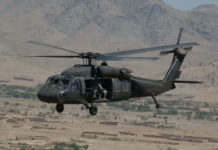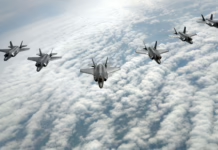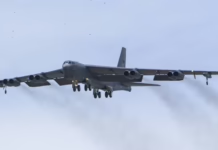The alliance proposes raising member nation contributions from 2% to 5% of GDP as defense ministers cite capability gaps and Russian military reconstitution.
NATO defense ministers endorsed a dramatic increase in military spending targets that would more than double current requirements, proposing member nations allocate 5% of their gross domestic product to defense-related expenditures.
The western military alliance’s current baseline target stands at 2% of GDP, a threshold met by only 22 of NATO’s 32 member nations last year. The proposed increase represents a 150% jump in defense spending requirements as the alliance adapts to evolving security threats following Russia’s invasion of Ukraine.
Defense ministers outlined the updated spending framework during a Brussels meeting on June 5, with NATO Secretary General Mark Rutte emphasizing the urgency of capability improvements.
“The proposal calls for allies to invest 5% of GDP in defence,” NATO announced. Under the plan, 3.5% would represent core defense spending, while the additional 1.5% would fund “defence and security-related investment, including in infrastructure and resilience.” Financial support for national defense industrial bases would fall within the latter category.
Capability Gaps Drive Spending Push
Rutte stressed the alliance faces significant military capability shortfalls that require immediate attention and substantial financial investment.
“We agreed on an ambitious new set of capability targets,” Rutte said. “These describe exactly what capabilities allies need to invest in over the coming years.”
The NATO chief warned of persistent vulnerabilities in alliance defenses. “There are still many, many gaps, and with the Russians reconstituting themselves we cannot afford to risk that we still have those gaps in a couple of years,” he said.
Earlier this year, Rutte called for a “quantum leap” in alliance spending as NATO detailed a collective total outlay of $1.3 trillion for 2024.
Implementation Timeline and Commitments
Unlike previous spending commitments, including the existing 2% target established in 2014, the new framework requires annual progress reporting from member nations.
“Nations will commit to yearly plans, showing the [planned] increase each year,” Rutte noted. While no specific deadline has been established for reaching the 5% target, he indicated the goal is achievable “in the foreseeable future.”
The alliance expects formal approval of the new investment plan during the NATO Summit in The Hague, Netherlands, scheduled for June 24-25.
Ukraine Support Continues
NATO allies have pledged more than €20 billion ($22.8 billion) in support to Ukraine for this year, demonstrating ongoing commitment to the conflict that has driven much of the alliance’s strategic reassessment.
“We all want to see this war brought to an end with a just and lasting peace,” Rutte said, linking continued Ukrainian assistance to broader alliance security objectives.
Rutte expressed confidence in member nation support for the spending increase. “Allies understand this is necessary,” he said, referring to “broad-based support” for the collective spending increase during the ministerial meeting.
“NATO’s deterrence is strong today, and through the decisions we have taken at this ministerial, we are making sure that it remains strong for tomorrow,” he said.

Key Takeaways
- NATO proposes increasing defense spending targets from 2% to 5% of GDP, representing a 150% increase in military expenditure requirements.
- Only 22 of 32 alliance members currently meet the existing 2% spending threshold.
- The new framework allocates 3.5% of GDP to core defense spending and 1.5% to infrastructure, resilience, and industrial base investments.
- Alliance officials cite significant capability gaps and Russian military reconstitution as primary drivers for increased spending.
- Formal approval expected at NATO Summit in The Hague on June 24-25.








